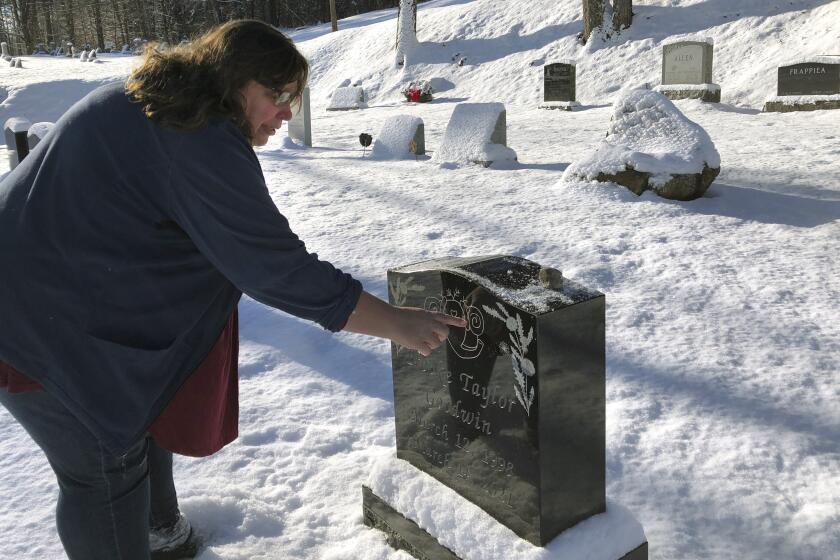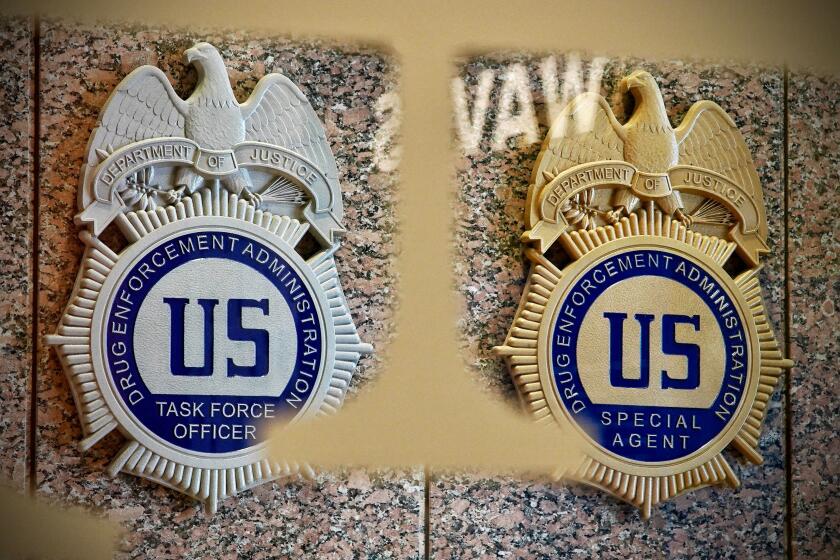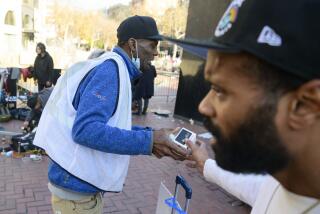Sheriff’s Dept. program to track presence of flesh-eating street drug in Los Angeles
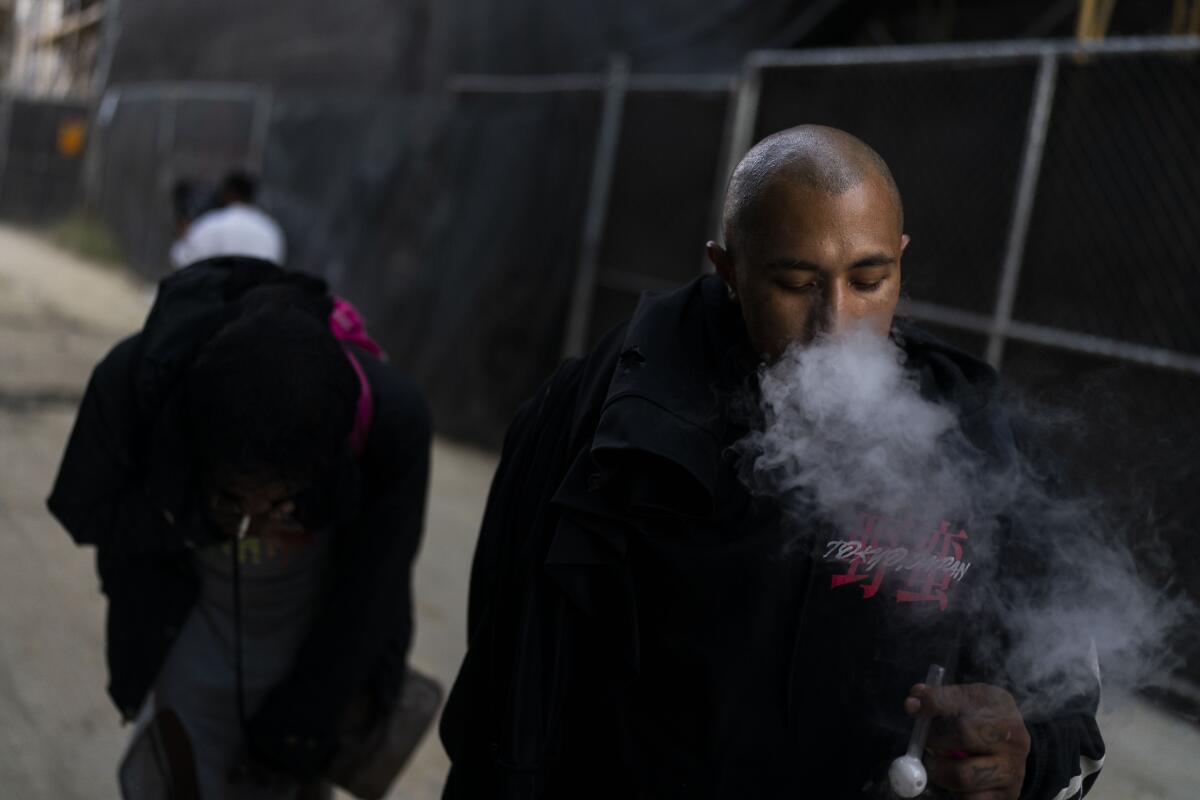
- Share via
Amid troubling signs that a dangerous sedative known as “tranq” has spread even further into the local street drug supply, the Los Angeles County Sheriff’s Department has launched a pilot program to better document the drug’s presence.
Xylazine is an animal tranquilizer that began appearing several years ago in illicit pills and powders on the East Coast. It’s been linked to deaths across the country and can cause human tissue to rot, leaving users with grisly wounds that sometimes lead to amputations.
In early March, county health officials initially said they weren’t sure whether the deadly adulterant had begun appearing on the streets of Los Angeles. Weeks later, the Times learned that the Sheriff’s Department crime lab had been detecting signs of xylazine in drug samples for at least four years — but they’d never told the health department or the public.
At the time, department officials said that was because, despite its harms, xylazine is not illegal, so formally tracking it was beyond the scope of their work.
Now, though, the pilot program could help change that.
Starting in mid-April, crime lab analysts began making note of any preliminary signs of xylazine they spotted while testing samples of confiscated drugs. In the past, even when lab workers noticed test results that seemed to show the presence of xylazine, they didn’t typically make any note of it. Instead, they treated it like any other legal substances commonly used as additives in illegal drugs.
“There are a bunch of different additives — like vitamin C, which comes up a lot — that we don’t write down,” said Capt. Ernest Bille, who oversees the department’s Scientific Services Bureau. “The mission, given the volume of the caseload that we have, is to figure out: Is this a controlled substance or not?”
Over the course of a month-long trial run, officials hope to get a better sense of how often they typically see presumptive positives for xylazine. If the number is relatively low, they’ll keep tracking for another month, Bille said. If it’s high, they’ll begin figuring out standards for doing additional confirmatory tests in the future — just as they would for illegal drugs.
“This is going to be very unique for us, because I’m asking them to track a non-controlled substance,” Bille said.
The move to track the dangerous sedative — spurred in part by conversations with UCLA researchers who study illicit drugs — comes as federal data shows an uptick in the drug’s presence across the county and in Southern California.
The rapid spread across the country of xylazine, also known as “tranq,” has local health officials worried it will exacerbate an already alarming overdose crisis.
“In the greater Los Angeles area we are seeing xylazine as an additive within fake fentanyl pills,” said Nicole Nishida, spokesperson for the Los Angeles Field Division of the U.S. Drug Enforcement Administration. “While the numbers are relatively low in our community compared to elsewhere in the United States, the presence of xylazine is now becoming more frequent and the trend is concerning.”
Federal data show that about 23% of fentanyl powder and 7% fentanyl pills seized last year contained xylazine. Nishida said those figures were around 3% and 8% for the greater Los Angeles region over that same period.
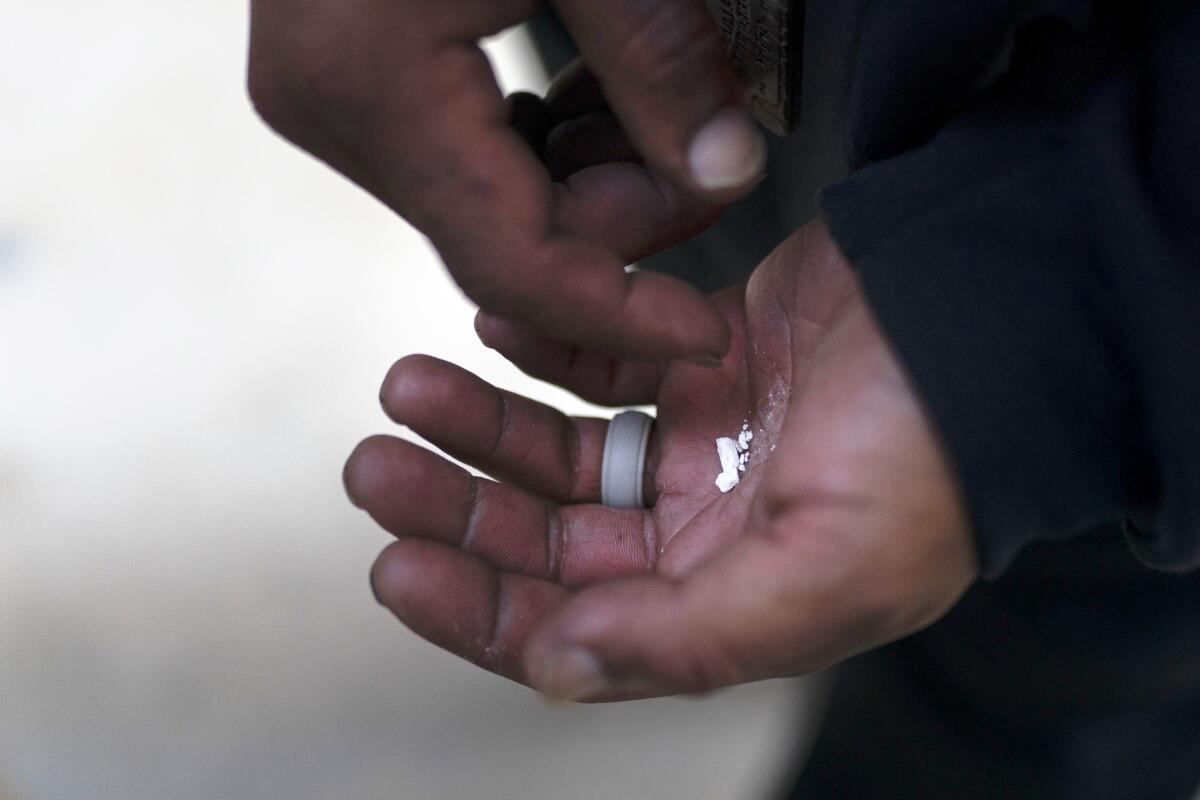
But those numbers might be less telling for Angelenos than they first appear: The Los Angeles Field Division’s region is so broad that it includes most of Southern California as well as Nevada, Hawaii and the territories of Guam and Saipan.
It’s not clear whether the xylazine samples were concentrated in one part of that region, and officials did not provide data more specific to Los Angeles County.
So far, law enforcement efforts to quantify and document the presence of xylazine in Los Angeles street drugs have been relatively limited — though, aside from the DEA figures, there are a growing number of signs of its presence.
An early public indication of the drug came in February, when a county health official confirmed to The Times that one man — a 25-year-old in El Monte — had trace levels of xylazine in his body when he died in December 2021. But the drug was present in such small amounts that the county medical examiner listed “combined effects of ethanol and fentanyl” as the cause of death.
Then in March, the county’s Department of Public Health issued a news release warning Angelenos that the sedative was “increasingly present within illicit drugs in California” and that it was now “likely present” in Los Angeles.
It was at least four years ago that L.A. County Sheriff’s Department officials say they began finding signs of a dangerous sedative in street drugs.
The news release mentioned the 2021 death and several others elsewhere in the state. However, although it said that xylazine had been detected in samples in cities to the north and to the south, it said nothing about whether there had been similar finds locally.
Then last month — a few weeks after the Sheriff’s Department admitted seeing signs of xylazine for at least four years — the UCLA researchers studying local street drugs confirmed finding the sedative in a sample of black tar heroin.
“It’s just another indication that it’s here in L.A.,” said Chelsea Shover, an epidemiologist and health services researcher at UCLA. “And it’s really important for people who use drugs to know that.”
One of the reasons xylazine is regarded as a particularly dangerous additive in street drugs is that, since it is not an opioid, the overdose-reversal medication naloxone is not effective on it.
Still, Shover said, if you believe that someone you know has overdosed on xylazine, the best course of action is to give them naloxone and call 911. Typically, xylazine is mixed with fentanyl to extend the drug’s high, so naloxone may still be effective.
“If you give someone naloxone but they’re still sedated, that’s a clue it could be xylazine,” Shover said. “Then call 911 for medical attention — but if you can’t do that, try to keep them comfortable and safe while they are sedated.”
For people who are using drugs but want to minimize the risk of ingesting xylazine, Shover said, there are now xylazine test strips available online.
More to Read
Sign up for Essential California
The most important California stories and recommendations in your inbox every morning.
You may occasionally receive promotional content from the Los Angeles Times.
